Accessories for Solar Observing
By: Brian Ventrudo and Manish PanjwaniDiscuss this article in the forums
January 26, 2017If you're interested in casual observation of the Sun or serious solar observation and imaging, there are a few accessories that make solar astronomy safer, more efficient, and more enjoyable. This article examines commonly used accessories for observing the Sun in white light or H-alpha.8.1 Solar Binoculars
Even the largest solar features are hard to see with just your eye and a safe solar filter, so a little magnification helps a lot when observing major sunspot groups, eclipses, and planetary transits across the face of the Sun. For casual 'grab and go' observation of these events, a pair of binoculars is the ideal tool.
White light filters, described in an earlier article, are available to fit over the objective lenses of many sizes of standard binoculars. Baader AstroSolar filters, especially, give excellent views of the Sun when securely fit over both objective lenses of a pair of binoculars. These filters are available in many sizes. Meade has also announced their EclipseView 10x50 solar binoculars which feature removable solar filters. But a pair of dedicated solar binoculars with built-in solar filters makes solar observation even more convenient. Lunt Solar Systems makes a line of dedicated pocket-sized 6x30 miniSUNocular and 8x32 SUNocular solar binoculars with non-removable white-light solar filters that reduce the Sun's intensity, including infrared and ultraviolet light, by a factor of 10-5 or more which makes them safe for visual observation. Celestron have also announced the introduction of 10x25 and 10x42 EclipSmart solar binoculars, but these have not been released yet.
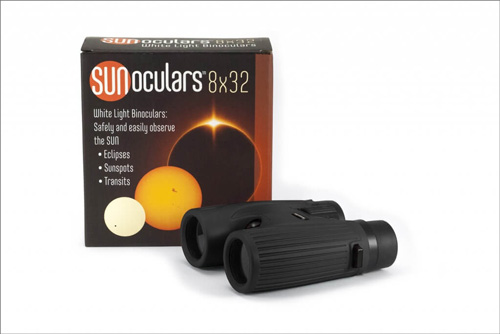 Figure 1 - Lunt 8x32 SUNocular solar binoculars
Figure 1 - Lunt 8x32 SUNocular solar binoculars8.2 Solar Finders
Most telescopes show only a very small part of the sky, so most observers use a finder, a small telescope or non-magnifying reflex device that helps with aiming a telescope quickly and accurately at a celestial object. Finders are also useful for finding the Sun, but standard astronomical finders MUST NOT be used for this purpose because the intense light of the Sun poses the risk of quick and severe eye damage or permanent blindness. Standard astronomical finders should be covered with their dust caps during solar observing sessions to reduce the risk of looking through a finder.
Standard white-light solar filters, which are placed securely over the finder's objective are available in small sizes for finder scopes. But for frequent solar observation, or for a dedicated solar telescope, it makes sense to get dedicated solar finders. Some manufacturers such as Orion make a dedicated 9x50 solar finder with a white-light filter.
The Sun is extremely bright, however, so a finder with an objective lens is not as important as when looking for faint night-sky objects. A pinhole finder such as the Televue Sol-Searcher, is less expensive and easier to use than a magnifying finder. This little device uses a small hole and a translucent projection screen to help aim a telescope at the Sun. When the finder is aligned with the telescope's optical axis, the observer simply moves the telescope until the Sun's image is centered on the screen. This is a much safer way to aim a scope at the Sun because you are looking at the finder, not through it.
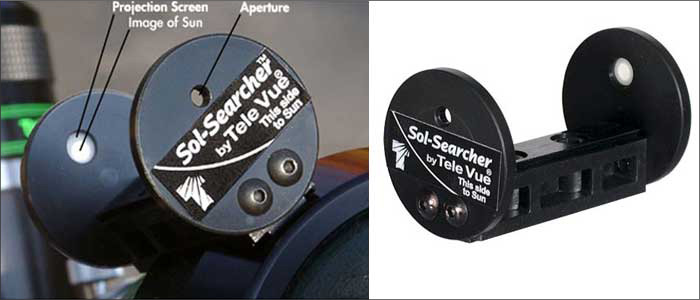 Figure 2 - The Tele Vue Sol-Searcher solar finder is a non-magnifying device that enables fast aiming of a properly filtered telescope at the Sun.
Figure 2 - The Tele Vue Sol-Searcher solar finder is a non-magnifying device that enables fast aiming of a properly filtered telescope at the Sun.ScopeStuff also makes a solar reflex finder with an adjustable aperture to make it easier to align the finder with the telescope. The finder can be mounted on the base of a Telrad reflex finder.
8.3 Solar Eyepieces
Which type of eyepiece should you use for observing the Sun? With a telescope equipped with a white-light solar filter or a hydrogen-alpha solar filter, nearly any standard astronomical eyepiece gives an acceptable view. However, many astronomical eyepieces are designed with multiple lens elements that are optimized for observing faint objects with a wide and flat field of view. When observing the Sun, the many optical surfaces in these eyepieces can create ghost images, a glow around the solar image, and annoying 'kidney-beaning' in which it becomes necessary to hold your eye at just the right place to see the full field of view.
To enhance white-light views of the Sun, Lunt Solar Systems introduced a line of solar eyepieces with fewer optical elements and enhanced anti-reflection coatings to provide high-contrast views of the Sun with dark backgrounds and reduced ghosting in white light or H-alpha. These eyepieces, which come in focal lengths of 8mm, 12mm, 16mm, 19mm, and 27mm, also work well for night-time astronomy. Lunt also makes a popular solar zoom eyepiece with an adjustable focal length of 7.2mm to 21.5mm. When used to observe the Sun, these eyepieces MUST be used with a telescope equipped with a safe white-light or H-alpha solar filter.
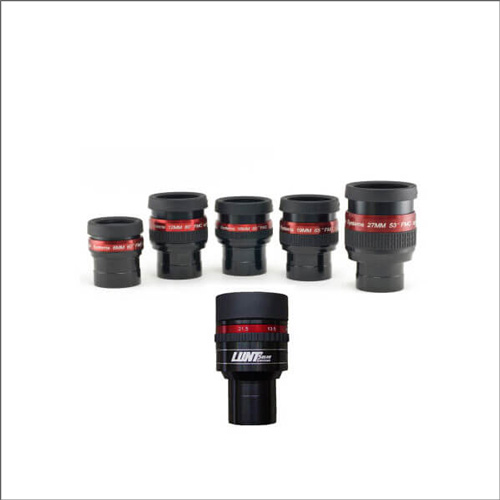 Figure 3 - A set of Lunt solar eyepieces can be used for solar observing with a telescope and safe white-light or H-alpha solar filter. They can also be used for observing celestial objects in the night sky.
Figure 3 - A set of Lunt solar eyepieces can be used for solar observing with a telescope and safe white-light or H-alpha solar filter. They can also be used for observing celestial objects in the night sky.For dedicated H-alpha observation in the very narrow band around 656.3 nm, Coronado manufacturers their CEMAX line of solar eyepieces and a Barlow lens with excellent anti-reflection coatings at this specific wavelength. These eyepieces do not include any filters, so when used to observe the Sun, these eyepieces MUST be used with a telescope equipped with a safe white-light or H-alpha solar filter.
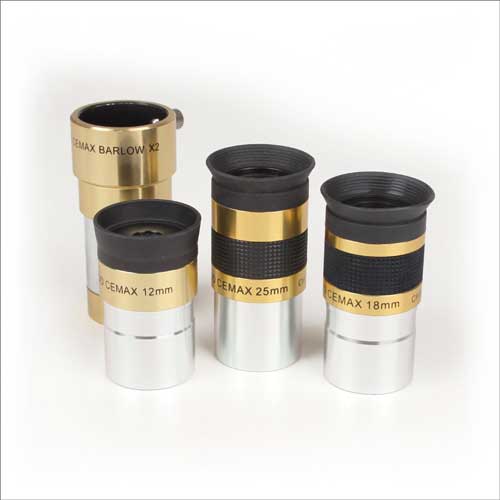 Figure 4 - A set of CEMAX solar eyepieces and a solar Barlow lens
Figure 4 - A set of CEMAX solar eyepieces and a solar Barlow lens8.4 Baader Solar Continuum Filters
The Baader Solar Continuum filter is a useful secondary optical element for solar observation and imaging. It cuts all light from the broadband solar spectrum except for a narrow spectral region around 540 nm (in the green region of the spectrum). Observing at this wavelength improves the contrast of solar granulation, the structure of sunspots, and other features like faculae. These filters pass light in the spectral region where the human eye is most sensitive, and many experienced observers find the added contrast at this wavelength is an improvement over observing the Sun in purely white light.
The Baader Solar Continuum filter is a secondary filter only. It MUST be used with a broadband white light filter or solar wedge to ensure the Sun's dangerously bright light is reduced to a safe level for visual observation and imaging. The filter does not work with any solar filter that does not pass green light at 540nm.
Baader also produces a double-stacked solar continuum filter that consists of two back-to-back filters tilted slightly to avoid reflections between them. The double-stacked filter provides a narrower bandwidth around 540nm to provide more detail and contrast on features in the solar photosphere such as granulation and sunspots and better rejection of out of band light in the red and blue region of the spectrum.
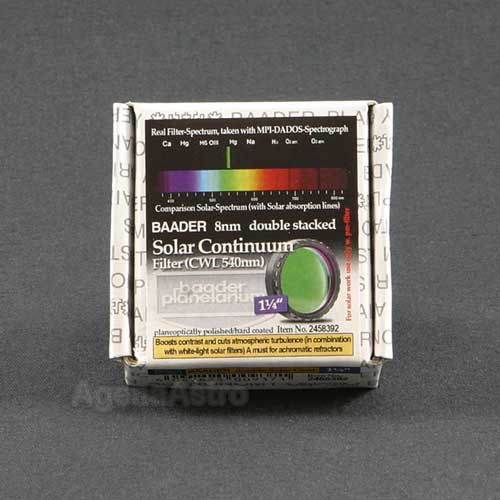 Figure 5 - The Baader double-stacked solar continuum filter passes light in a narrow band near 540nm to enhance the visual and photographic views of sunspots, granules, and other features in the Sun's photosphere.
Figure 5 - The Baader double-stacked solar continuum filter passes light in a narrow band near 540nm to enhance the visual and photographic views of sunspots, granules, and other features in the Sun's photosphere.8.5 Solar Observing Hoods and Hats
It's an occupational hazard, but when you're observing the Sun, chances are you're going to be bathed in fairly bright sunlight. Some of this light enters your eye and decreases image contrast, and some falls onto exposed skin and causes a sunburn and an uncomfortably warm temperature. That's why many solar observers use some form of observing hood. By draping the hood over your head and eyepiece, you improve image contrast and cut down on heat and light. Ideally, the hood should have an opaque black interior to reduce light, and a reflective exterior to reduce the absorption of heat into the hood. You can make your own hood, or try the well-reviewed solar observing hood from Telegizmos (it was a Sky and Telescope Hot Product for 2016).
If you don't use a solar hood, or if you're helping during solar observing outreach events, a solar hat is a very useful accessory. With a thick cap and long neck flap, a solar hat keeps your head covered and prevents sunburn. A specialty solar hat from Lunt, for example, is constructed of a UV protectant material, and includes a small pocket and a clip to prevent the hat from being blown off in the wind.
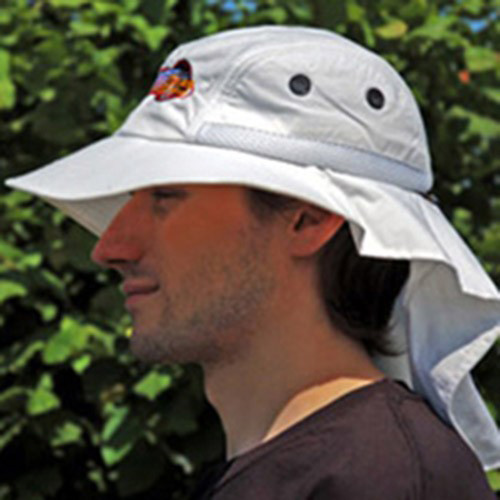 Figure 6 - A Lunt solar observing hat.
Figure 6 - A Lunt solar observing hat.
***
Editor's Note: Do you have any favorite solar observing accessories, or tips for better and safer solar astronomy? Drop us a line and we'll include them in updated versions of our solar observing guides. About the Author
About the Author
Brian Ventrudo is a writer, scientist, and astronomy educator. He received his first telescope at the age of 5 and completed his first university course in astronomy at the age of 12, eventually receiving a master's degree in the subject. He also holds a Ph.D. in engineering physics from McMaster University. During a twenty-year scientific career, he developed laser systems to detect molecules found in interstellar space and planetary atmospheres, and leveraged his expertise to create laser technology for optical communications networks. Since 2008, Brian has taught astronomy to tens of thousands of stargazers through his websites OneMinuteAstronomer.com and CosmicPursuits.com.
 About the Author
About the Author
Manish Panjwani has been an active amateur astronomer since before Halley's Comet last flew by our neighborhood. A former wireless communications consulting engineer and management consultant to various Fortune 500 companies, Manish started Agena AstroProducts in 2003. Since then, Agena has become one of the leading online retailers of telescopes and astronomical accessories worldwide. Besides observing from his heavily light polluted backyard in Los Angeles, Manish enjoys conducting astronomy outreach programs in local schools. Manish also holds a Master's degree in Electrical Engineering from Virginia Tech and an MBA from the Kellogg School of Management at Northwestern University.
***
This article is © AstronomyConnect 2017. All rights reserved.
Dismiss Notice
New Cookie Policy
On May 24, 2018, we published revised versions of our Terms and Rules and Cookie Policy. Your use of AstronomyConnect.com’s services is subject to these revised terms.

